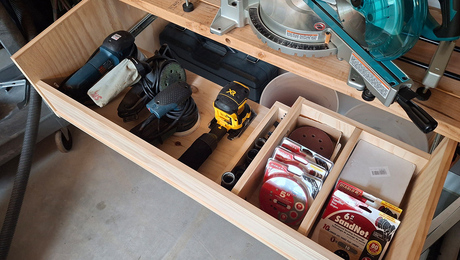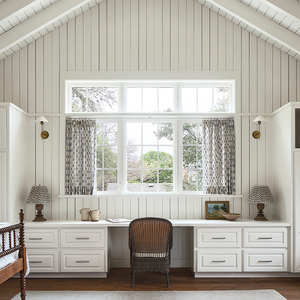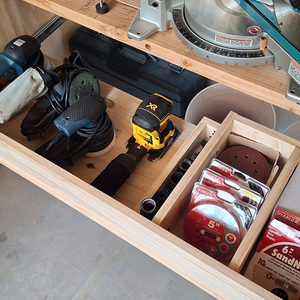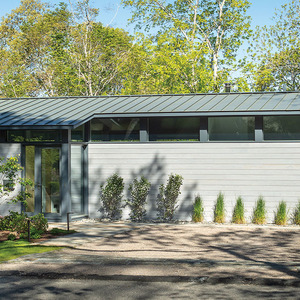I am working on renovating a home built in 1950. At one point in time the house had a greenhouse on the back which was removed before we bought the house. I imagine it was an aluminum framed structure made by the Burnham Corp. (who is headquartered her in Lancaster, PA). My problem is that although the structure itself is long gone all of the caulking still remains on the stone walls of the house. I would be kind in saying that they were very generous in their application method.
How do I get it off the stone (I think it is granite)? Heat gun, torch, solvent? I figured I would ask before I go and create more problems that are harder to undo. The caulk is not causing a problem, other than aesthetically for my wife.
Any suggestions would be greatly appreciated. I already know the job is going to be messy, tedious and a pain.
Thanks,



















Replies
This is real stone, right?
You might be able to scrape some of it off with a heat gun. Then you could try various solvents to see what eats it. Acetone, naptha, and brake cleaner are good choices.
If none of that works, you can try abrasive scrubbing methods such as TSP or scouring powders, sandpaper, pressure washer.
Then there are acids; citric, muratic
If all else fails, you can always grind it off with a grinder, though the 'clean' ground stone may not match the old stone very well.
Without knowing your materials I can't say that less aggressive methods would work. But when we needed to remove silicone caulk from concrete block in order to paint the only thing that would work was to grind it off with a wire wheel or grinding wheel. Silicone is totally non paintable so all residue had to come off. Besides, there is no solvent for silicone.
If your caulk is latex then after scraping as much off with a putty knife and razor blade scraper try acetone. Acetone will dissolve latex paint, perhaps it will dissolve caulk, too.
Like the previous poster said, there will be a difference in color for quite a while.
If the stone is at all porous, solvents will only make the gunk soak in deeper. Scrape and hack to get the bulk of it off, then sandblast the remainder and the entire surface to get a uniform appearance.
-- J.S.
I was pleasantly surprised to see that there was actually something called caulk remover. Got it at Home Depot. It won't work with silicone, but did okay on other caulk. I used an abrasive pad with it (like a Scotchbrite pad).
You might also try dry ice to make it as brittle as possible and scrape with a 5-in-1 or stiff putty knife. If some remains in the pores of the stone Peel-Away paint remove MIGHT get it out. I think formula 1 which is the cheap stuff (it's really just lye and cornstarch if you want to make your own - just cover it with plastic to keep it from drying out).
My 3300 psi, 4 gpm pressure washer takes oil or latex paint and all types of cauliking off basalt and concrete quite handily, imagine it would do well on granite also.
BTW: re there is no solvent for silicone. MEK softens silicone and detaches it from metal well, never tried mek on silicone on stone. I usually lay a mek soaked paper towel on the silicone and cover with saran wrap for a half hour.
There are some of the caulk removers that are listed for silicone, maybe 3M makes one.But many petroleum products with "attack it" and cause it to become a jelly mass.I have used Goof Off. Still needs a fair amount of srcapping and rubbing, but on the last bit soak it with Goof Off and then wipe it off and.Have do that easily on hard bathroomsurfaces, tile and cultured marble.
Dap makes a silicone remover in a little plastic jar. I've used it a few times but not on stone. It is worth trying on stone.
Have a good day.
Cliffy
Napalm
Witty tagline...
If it really is granite, just about anything will be safe, short of a super-hot torch. I'd try a hot air gun and scraping first, if the rock is reasonably smooth. Then a good, noxious paint remover.
If the rock is slightly rough texture and you get desperate, a hot torch will probably cause the surface to flake slightly and shed any residue (though try this in the fictitious "inconspicuous area" first).